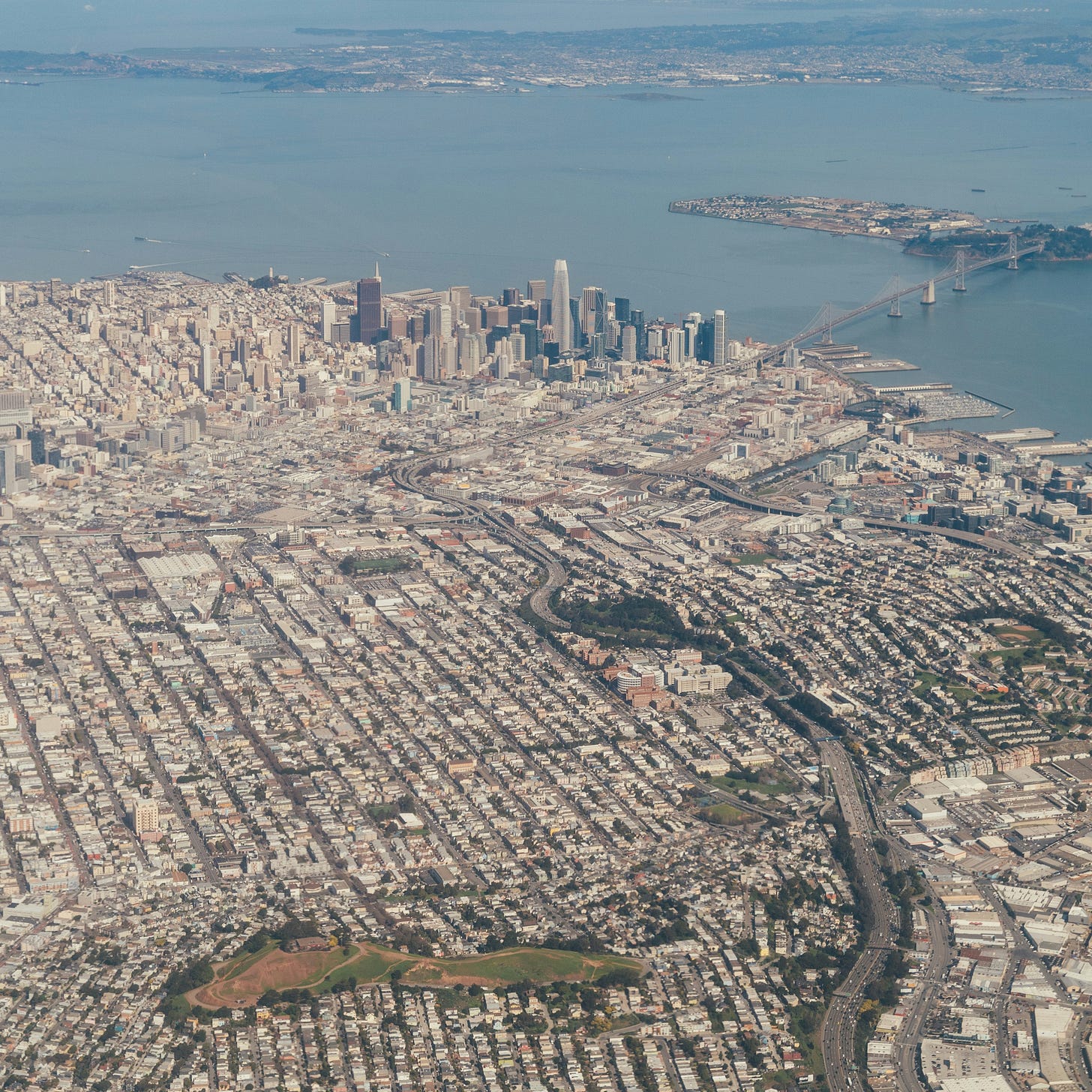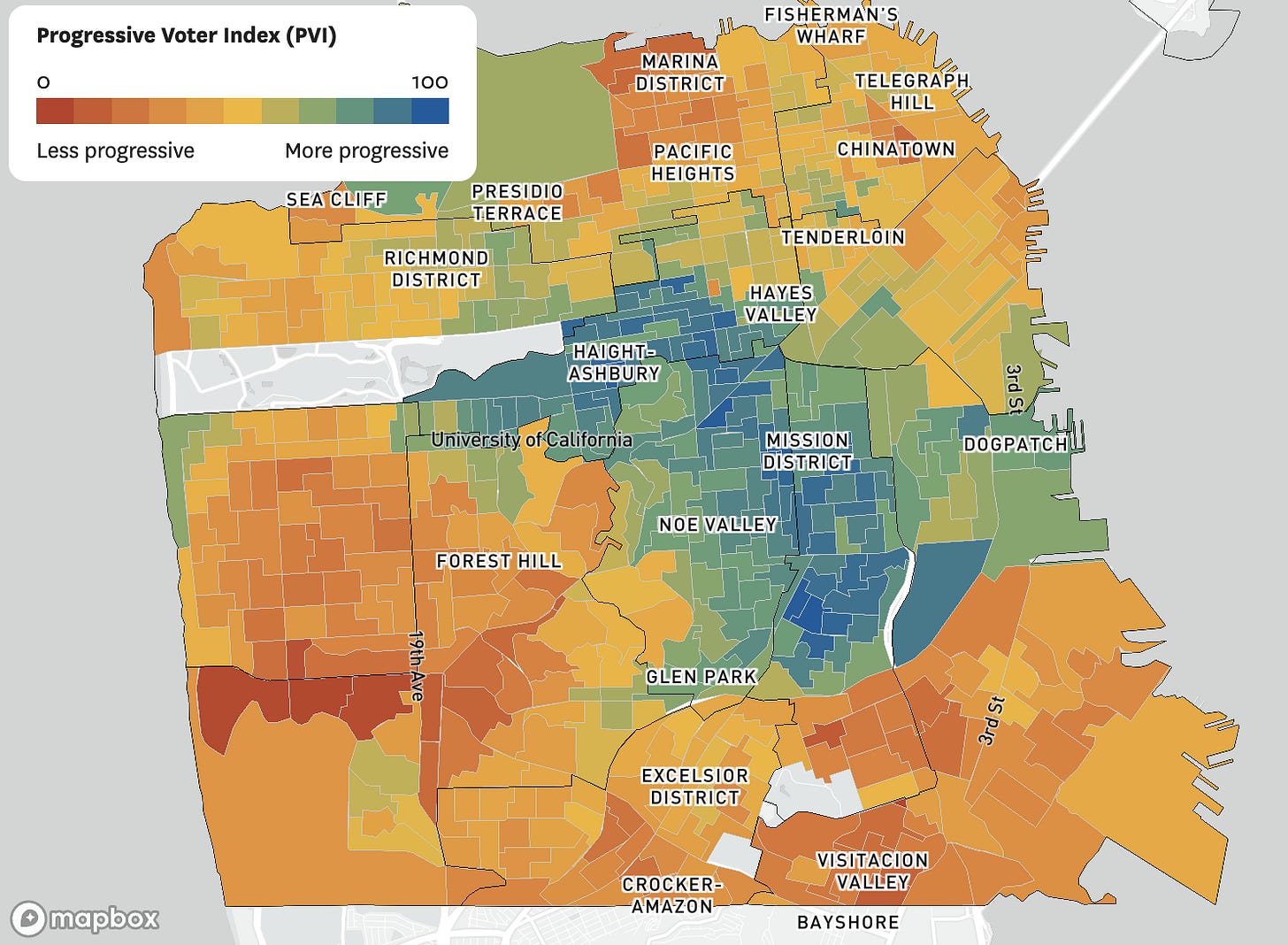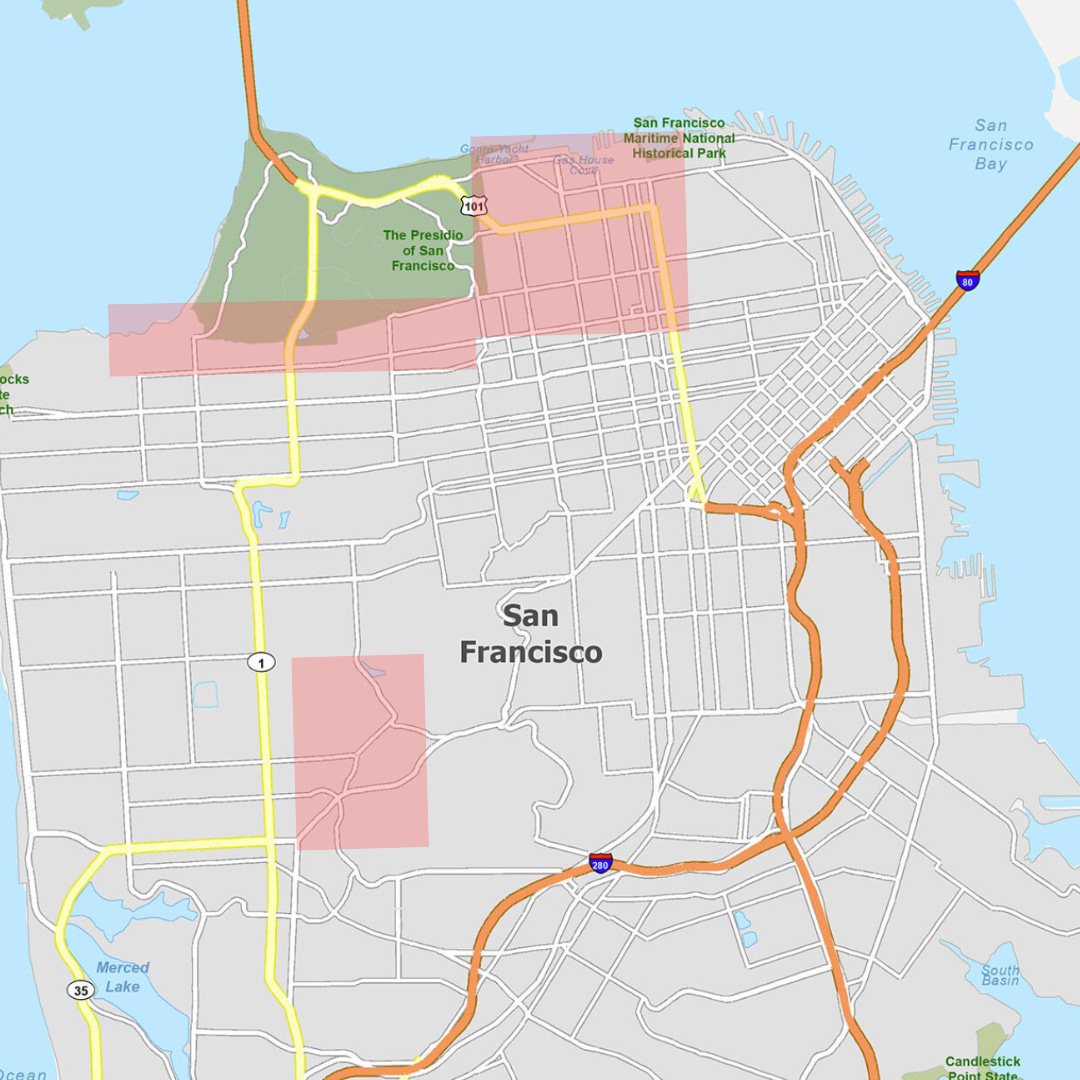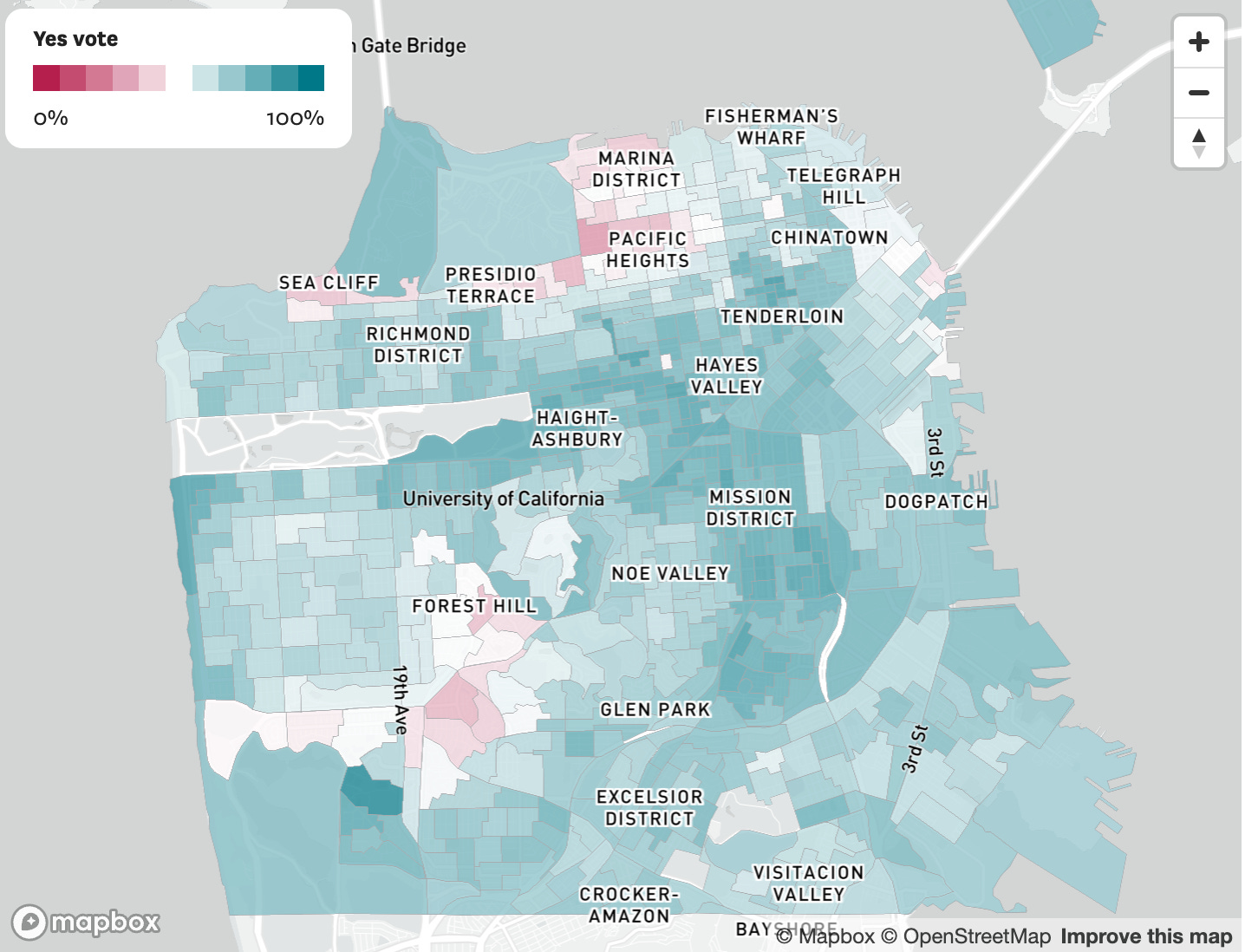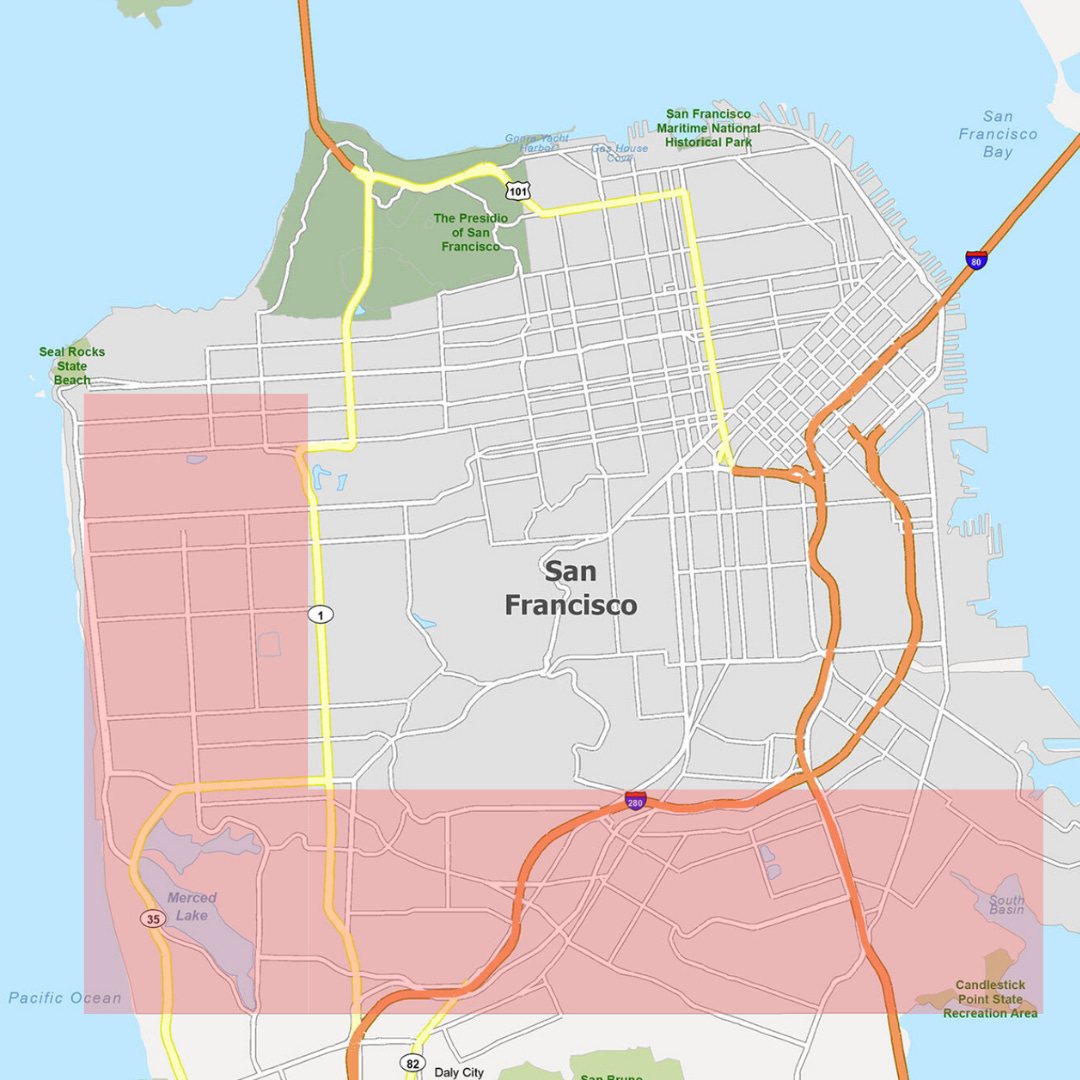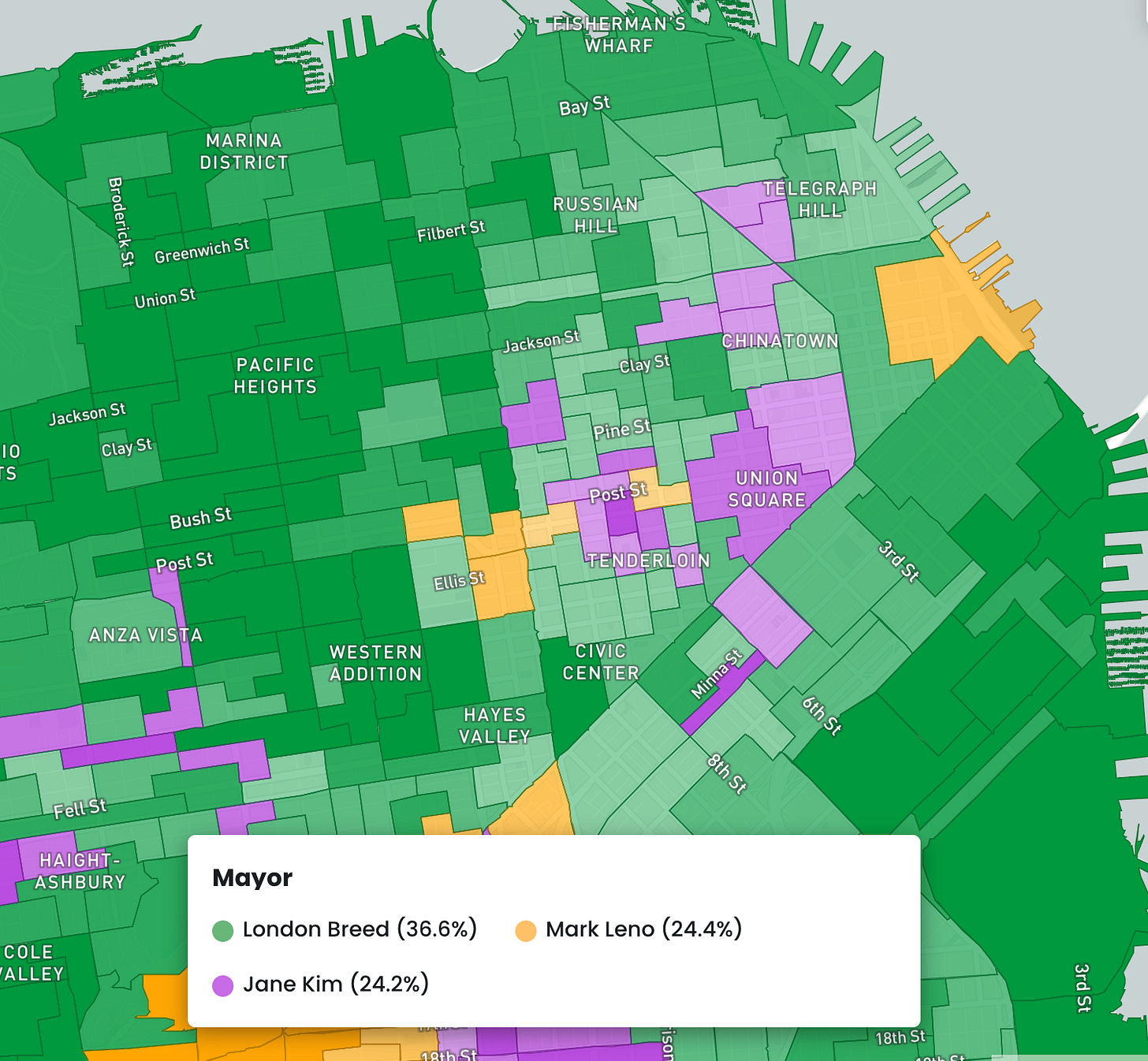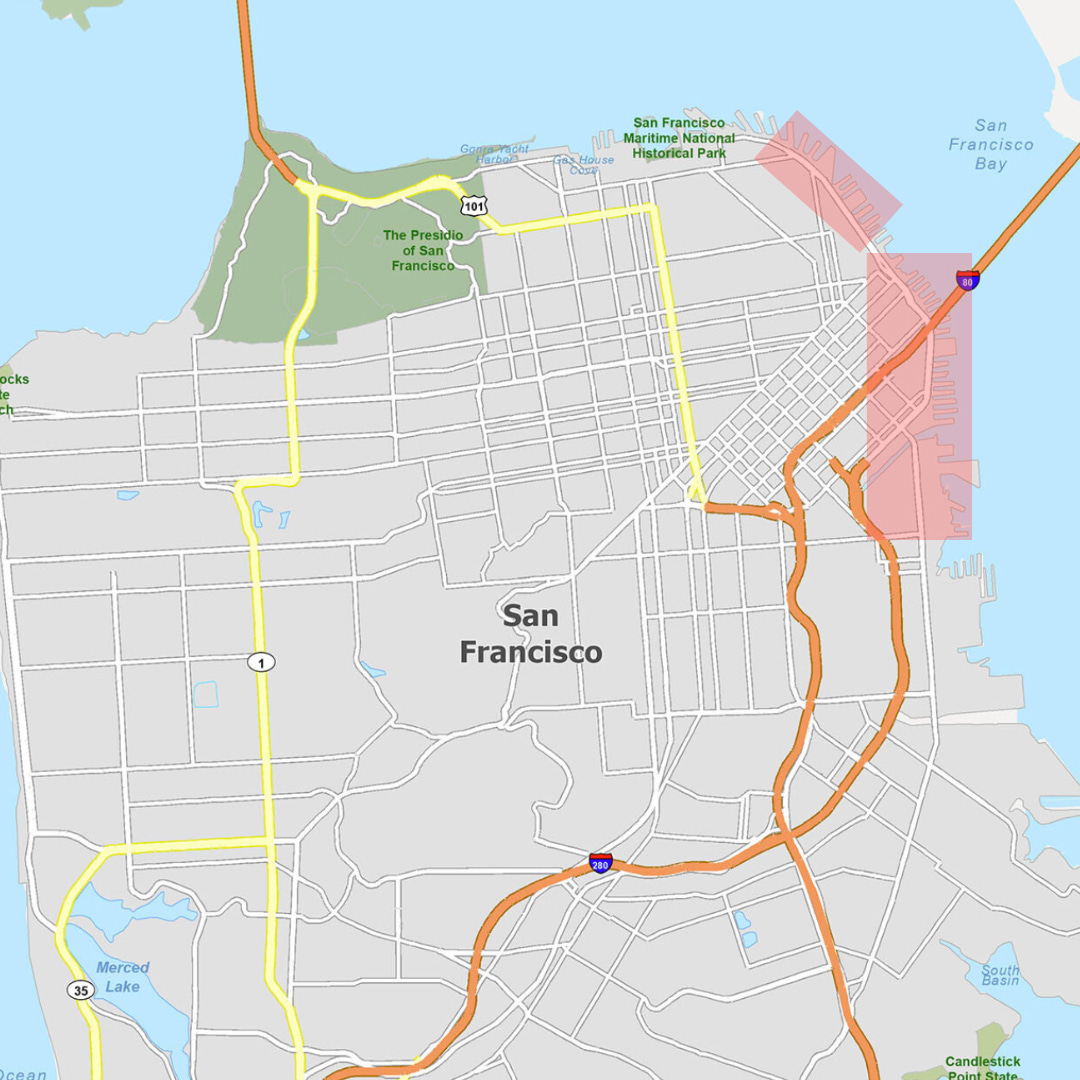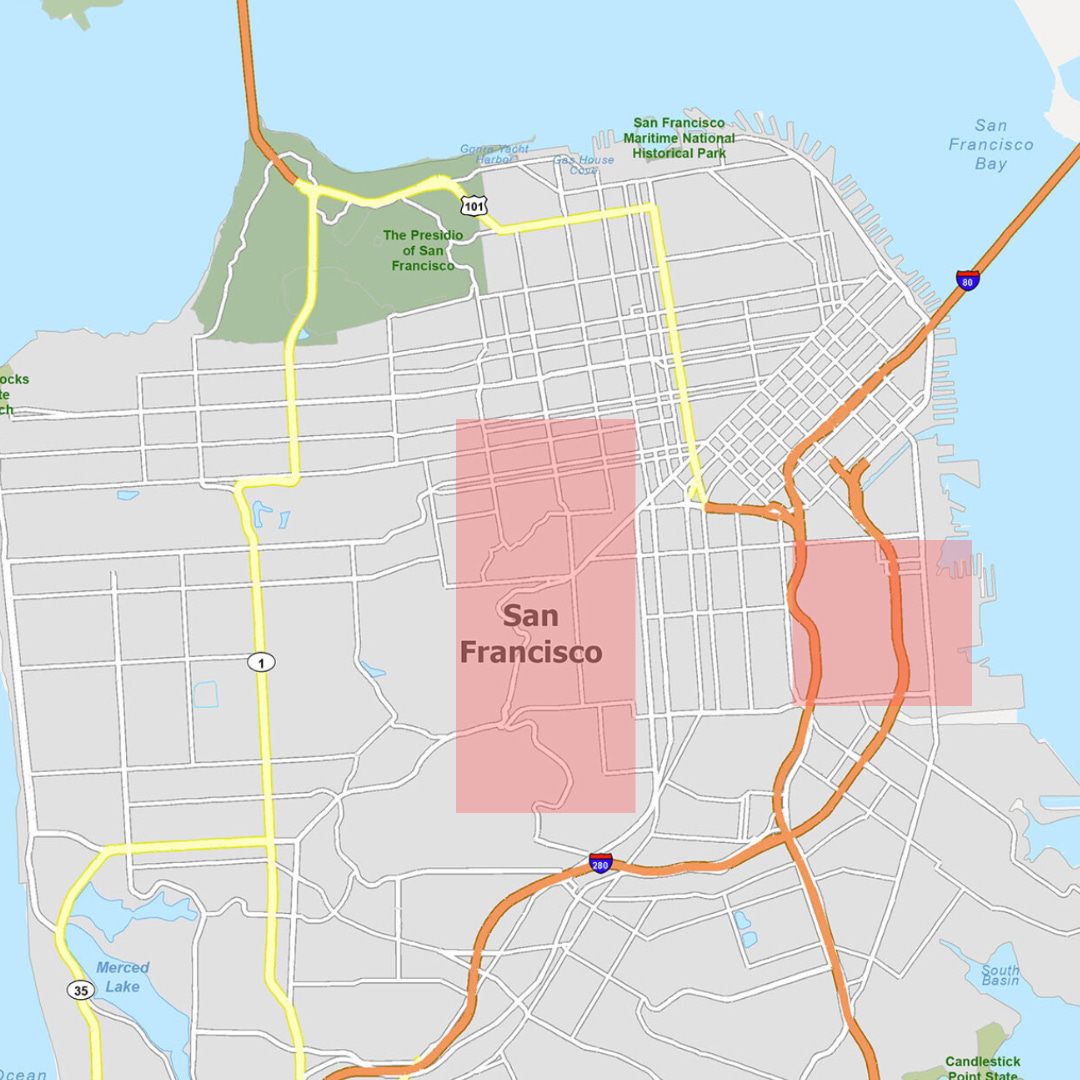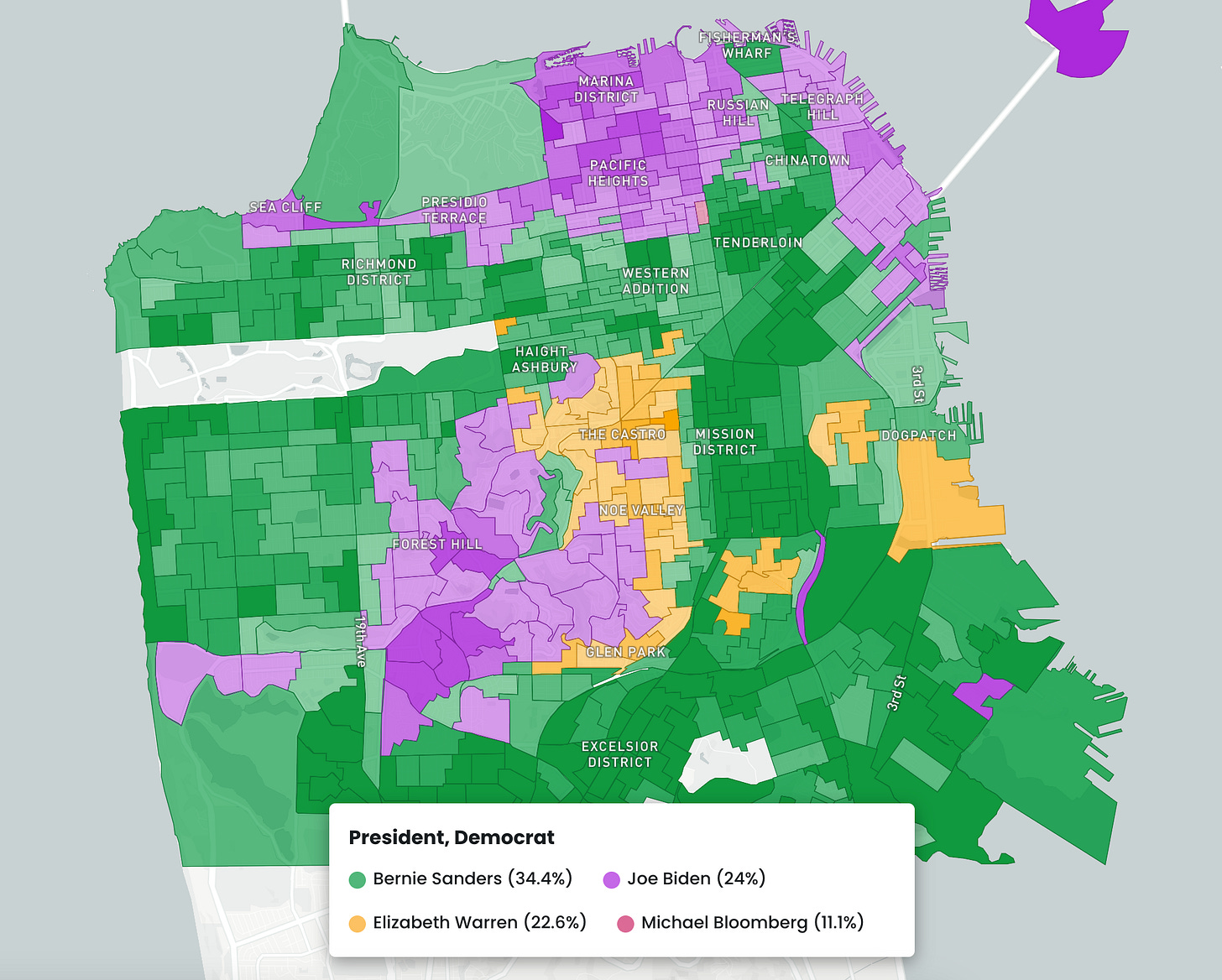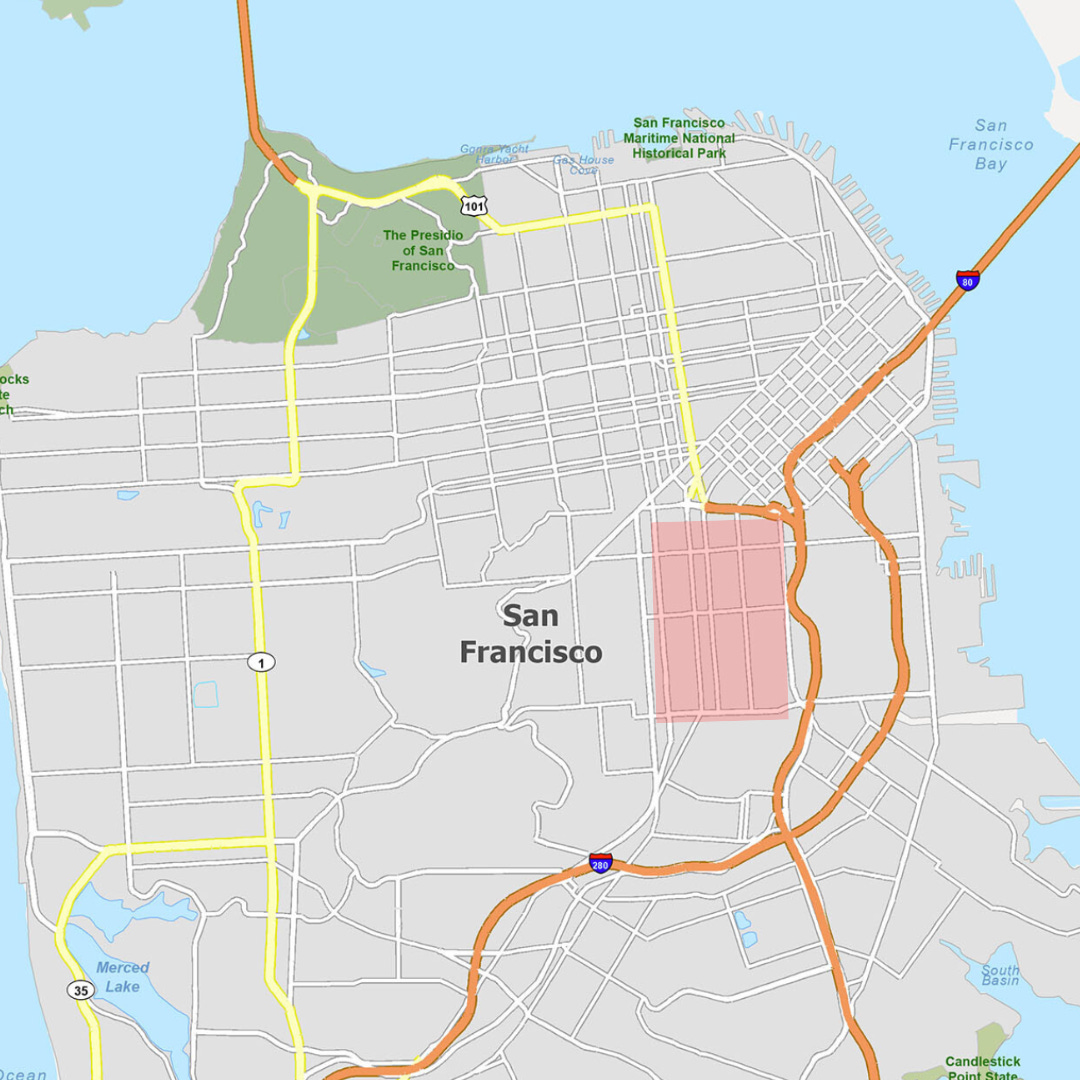The Political Neighborhoods of San Francisco
A whole new way to stereotype your neighbors
Growing up far from California, I never thought much about San Francisco. I was a big NBA fan, but couldn’t have told you exactly where the “Golden State” Warriors were from. When my family packed up the minivan and took a road trip through the state, I was far more compelled by the sunny beaches, wildlife parks, and movie backlots of Southern California.
But one thing I did know—San Francisco was liberal. Very, very liberal.
And I wasn’t wrong. In 2020, Joe Biden defeated Donald Trump in the city with 85% of the vote, with no precinct dropping below 64% support. It’s also long been (in)famous for a certain left coast flavor of progressivism—think hippies taking over city parks in the 60’s and city hall-approved gay marriage ceremonies back when that kind of thing was still a political career killer.
More recently, though, the chattering classes have been considering the unimaginable. Is San Francisco *gasp* even still liberal!?
Now, I don’t really have interest in addressing that question. I think it’s clear that San Francisco is much more liberal than the median American city, with a relatively narrow political spectrum that ranges from moderate liberals to progressives.
But now that I live here, I’ve come to realize there’s a lot more nuance to the city’s liberal politics.
One way to investigate those shades of blue is by looking at the city’s political neighborhoods—areas with relatively cohesive socio-economic, ethnic, and political characteristics. Sound familiar? If you read the great piece on Chicago that inspired this one, that would make sense.
Let’s get into it.
The Northern Establishment
Key areas: The Marina, Pacific Heights, Sea Cliff, Saint Francis Wood
The Northern Establishment is predominately located above California Street, cozying up to the Presido and its foggy views of the Golden Gate Bridge. For those who prioritize adjacency to the city’s private golf clubs, however, there is a diaspora community in the southwest hills.
Composed of the managerial elite of finance, real estate, and tech, and the post-college crowd who work for them, they’re high-income, college-educated, white, and politically moderate—the kind of moderate who’s eyes brighten at the mention of Mitt Romney’s name.
In the 2020 Democratic primaries, this was Biden country. But perhaps more revealing, this was the sole area in the city where billionaire businessman Michael Bloomberg hoovered up a significant number of votes. The former NYC mayor even managed to tie Biden in precinct 9221, home to Pacific Height’s “billionaire’s row”.
This political neighborhood is perhaps best exemplified by this San Francisco Chronicle map of the results of a November 2020 ballot proposition which imposed an additional tax on executive pay. The Northern Establishment stood tall and roared “no!”
It also has its own society magazine. You get the picture.
Locally, the neighborhood supports law and order measures like police staffing and drug screening, while opposing tax increases. On the question of housing development, there is a bit of a split — with the northern section strongly supportive and the southwest lukewarm.
Outerlands
Key areas: The Richmond, the Sunset District, Excelsior, Crocker Amazon, Bayview
Forming an “L” shape on the western and southern edges of the city, this political neighborhood is made up of quieter, residential areas. If you’ve been a Tourist® to San Francisco, you likely have no idea where I’m talking about, so here’s a map.
If, however, you live in city, this is probably where you go for Dim Sum, beachside bonfires, or to get your car repaired. It’s generally pleasant and feels middle class. “Real” San Francisco.
This neighborhood is unified by a few characteristics: it’s heavily Asian, of average income, and politically moderate. There’s some divergence—the west side holds more college degrees while the southern end is primarily high school educated.
The southeastern areas of Bayview and Hunters Point also contain San Francisco’s largest black community, though its politics aren’t distinct enough from the rest of the neighborhood to separate them.
Like The Northern Establishment, Outerlands leans heavily moderate in local politics, but nationally the neighborhood is more populist, uniformly voting for working class enthusiast Bernie Sanders in 2020 (Bloomberg came in a a distant fourth).
Exuding a bit of a suburban vibe, Outerlands also tends to oppose housing development, public transportation initiatives, and funding for homeless services—issues more relevant to densely populated areas .
Dynamic Downtown
Key areas: North Beach, Soma, Chinatown, Tenderloin, Western Addition
This neighborhood is densely packed and ethnically diverse, with small pockets of overlapping culture. If you’ve visited San Francisco, you almost certainly rode cable cars, slept at hotels, shopped for trinkets, or got drunk at dive bars in this area. It’s a lot of fun.
While diverse, there is cultural and political cohesion. Dynamic Downtown has low levels of educational attainment, low household incomes, and a high proportion of immigrant households. You’d probably call it working class. (Though maybe not the image of “working class” gleaned from national media visits to heartland diners).
The neighborhood is neither particularly progressive nor distinctly moderate, but mostly voted for Sanders in the 2020 Democratic primary, reflecting its working class character.
In mayoral elections, you see fractures along ethnic lines. In June 2018, Asian-American candidate Jane Kim won in Chinatown and the heavily Vietnamese Tenderloin, while London Breed, African-American, trounced the competition in the black areas of the Western Addition.
Bougie Bayside
Key areas: Telegraph Hill, Mission Bay, Rincon Hill
Located on the Embarcadero, and wrapping around downtown, these waterfront areas form a neighborhood of historic hillside villas, mid-rise blocks, and soaring luxury towers.
The entire neighborhood is well-off and well-educated, but the southeast is younger (nouveau riche?) while Telegraph Hill has an older population with a matching old San Francisco vibe. Ethnically, Bougie Bayside is equal parts white and Asian.
Politically? It’s moderately moderate. Not as stridently anti-progressive as Outerlands or The Northern Establishment, it still leans that direction in local politics. In Democratic primaries, it’s a bit of a mix—Biden won a plurality, but Sanders, Bloomberg, and Warren made strong showings in various areas.
NPRville
Key areas: NoPa, the Haight, the Castro, Noe Valley, Bernal Heights, Potrero Hill, Dogpatch
Let’s face it—if you’re reading this Substack, there’s a decent chance you live in NPRville. It’s a prosperous blend of buzzy cocktail bars, stores selling tiny, expensive household goods, and sleepy hillsides nurturing young families before they decamp to Marin County.
Another way to think about it? This is the neighborhood for people who went to high school with The Northern Establishment, but skipped the frat and got a humanities PhD instead.
Am I just caricaturing here? Sure, but it’s not *that* far off.
Mostly white and deeply progressive on social issues, NPRville is notable for its unusually high number of graduate degrees.
Few starving students here though—it has a high average income and prefers an orderly city, showing some support for welfare recipient drug screening and increased police powers (March 2024 Props E and F).
Probably the simplest political shorthand for the neighborhood is its strong support for former Harvard professor, one-time Native American, and progressive firebrand Elizabeth Warren. You know, Bernie, but with a plan.
The Mission
Key areas: The Mission
If I was lazier, I might just lob this in with NPRville and call it a day. It’s in the same geographic area and has progressive politics. Or maybe you could argue it’s an extension of Dynamic Downtown—with a large population of working class immigrants.
But, even though it’s by far the smallest of the political neighborhoods, I think it’s distinct enough to deserve its own identity.
The center of San Francisco’s Latino culture with a healthy dose of baristas, artists, and tech workers, The Mission is a mix of family-run taquerias, quiet residential streets, and popular nightlife strips.
It’s also a hotbed of progressive activism. On every vote I reviewed—Democratic primaries, statewide elections, and local propositions—The Mission came down on the progressive side.
There’s a more working class flavor than neighboring NPRville though—The Mission overwhelmingly supported Sanders in the 2020 Democratic primary and rejected quality of life propositions perceived to support the police or harm vulnerable populations.
From a distance, San Francisco seems united in its liberal politics. But look a bit closer and deep tensions between sparring factions come into view. Frankly, it’s a bit of knife fight.
But that intensity lends itself to developing successful politicians. These 49 square miles are a perfect, if brutal, training ground for politicians with bigger ambitions—whether heading to the Governor’s house (Newsom), U.S. Senate seats (Harris, Feinstein), or office of the Speaker of the House (Pelosi).
The city’s political neighborhoods are distinct because its citizens *really* care about the issues and gravitate toward like-minded neighbors.
So if someone asks me if San Francisco is still liberal, I’d probably respond “sure, but which kind?”


